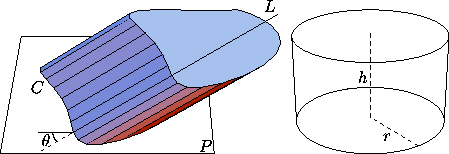
Figure 1: Left: an oblique cylinder with generator L and directrix C. Right: a right circular cylinder.
Next: 13.3 Cones
Up: 13 Polyhedra
Previous: 13.1 Regular Polyhedra
Given a line L and a curve C in a plane P, the cylinder with generator L and directrix C is the surface obtained by moving L parallel to itself, so that a point of L is always on C. If L is parallel to the z-axis, the surface's implicit equation does not involve the variable z. Conversely, any implicit equation that does not involve one of the variables (or that can be brought to that form by a change of coordinates) represents a cylinder.
If C is a simple closed curve, we also apply the word cylinder to the solid enclosed by the surface generated in this way (Figure 1, left).

Figure 1: Left: an oblique cylinder with generator L and directrix
C. Right: a right circular cylinder.
The volume contained between P and a plane P' parallel to P is
where A is the area in the plane P enclosed by C, h is the
distance between P and P' (measured perpendicularly), l is the
length of the segment of L contained between P and P', and
 is the angle that L makes with P. When
is the angle that L makes with P. When
 =90° we have a right cylinder, and h=l. For a
right cylinder, the lateral area between P and P' is hs,
where s is the length (circumference) of C.
=90° we have a right cylinder, and h=l. For a
right cylinder, the lateral area between P and P' is hs,
where s is the length (circumference) of C.
The most important particular case is the right circular cylinder (often simply called a cylinder). If r is the radius of the base and h is the altitude (Figure 1, right), the lateral area is
2 rh,
rh,
the total area is 2 r(r+h),
and the volume is
r(r+h),
and the volume is
 r
r h.
h.
The implicit equation of this surface can be written
x +y
+y =r
=r ;
;
see also Section 16.
![[HOME]](/pix/home.gif) The Geometry Center Home Page
The Geometry Center Home PageSilvio Levy
Wed Oct 4 16:41:25 PDT 1995
This document is excerpted from the 30th Edition of the CRC Standard Mathematical Tables and Formulas (CRC Press). Unauthorized duplication is forbidden.